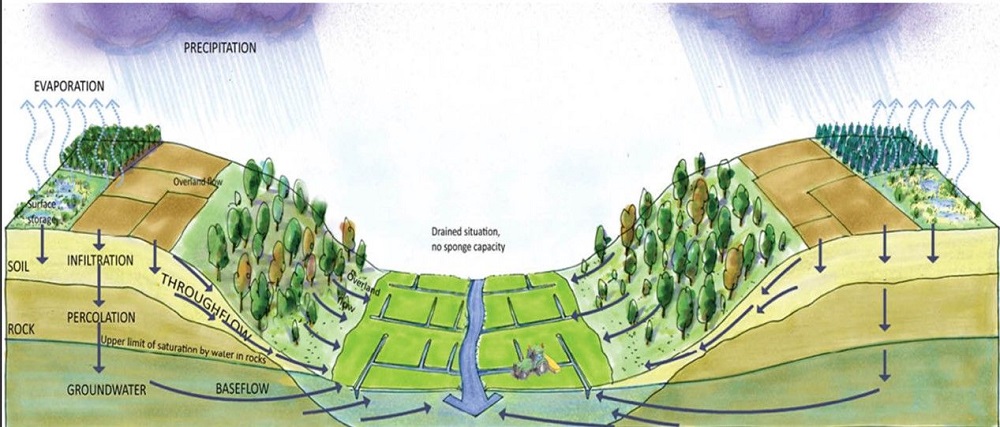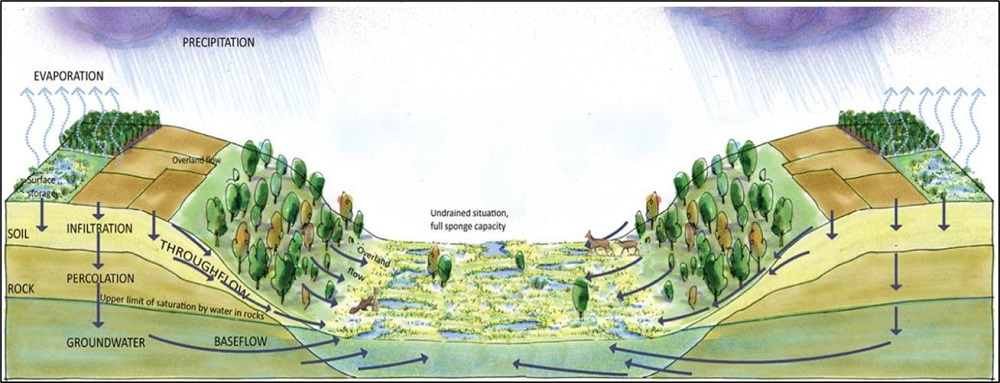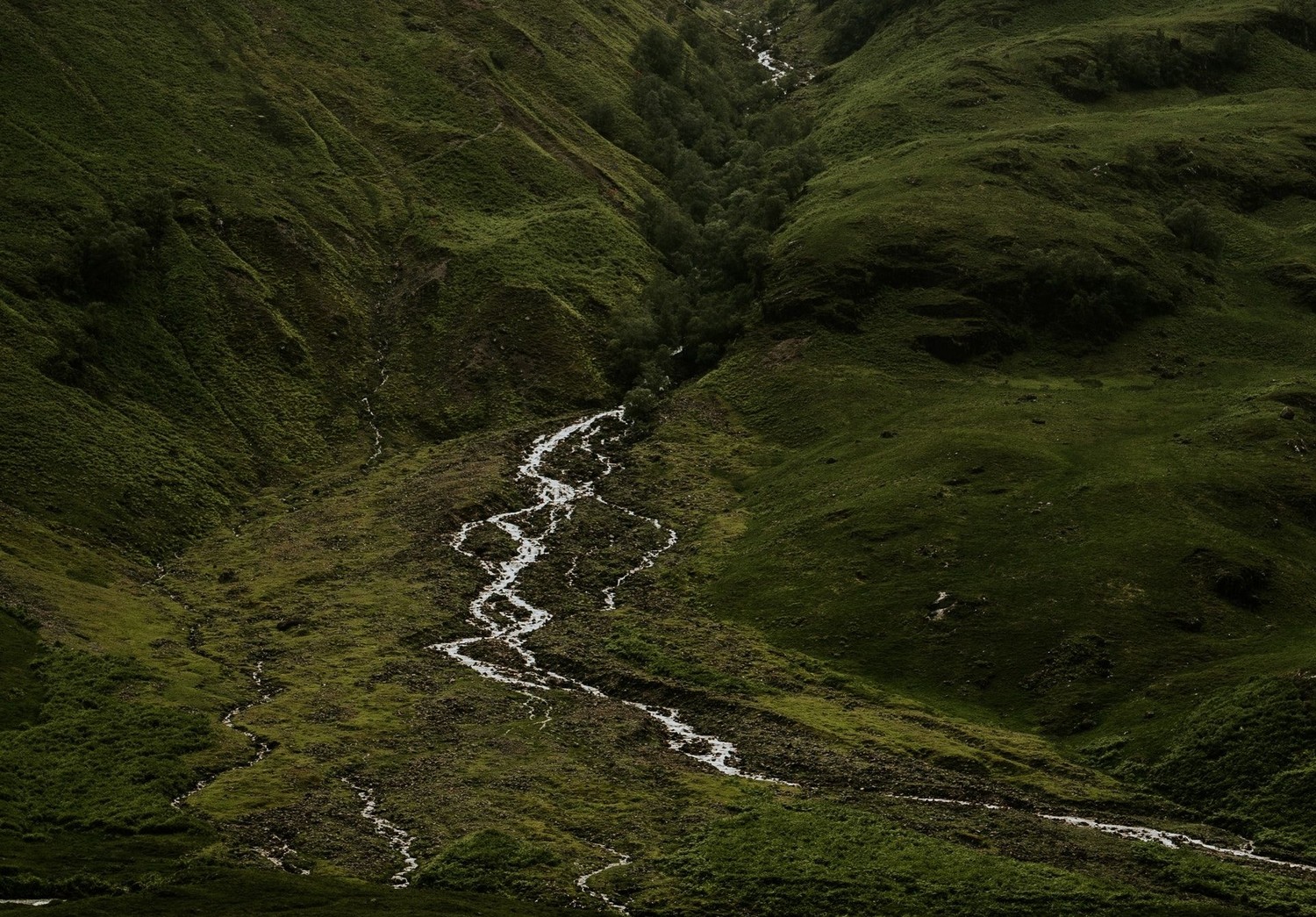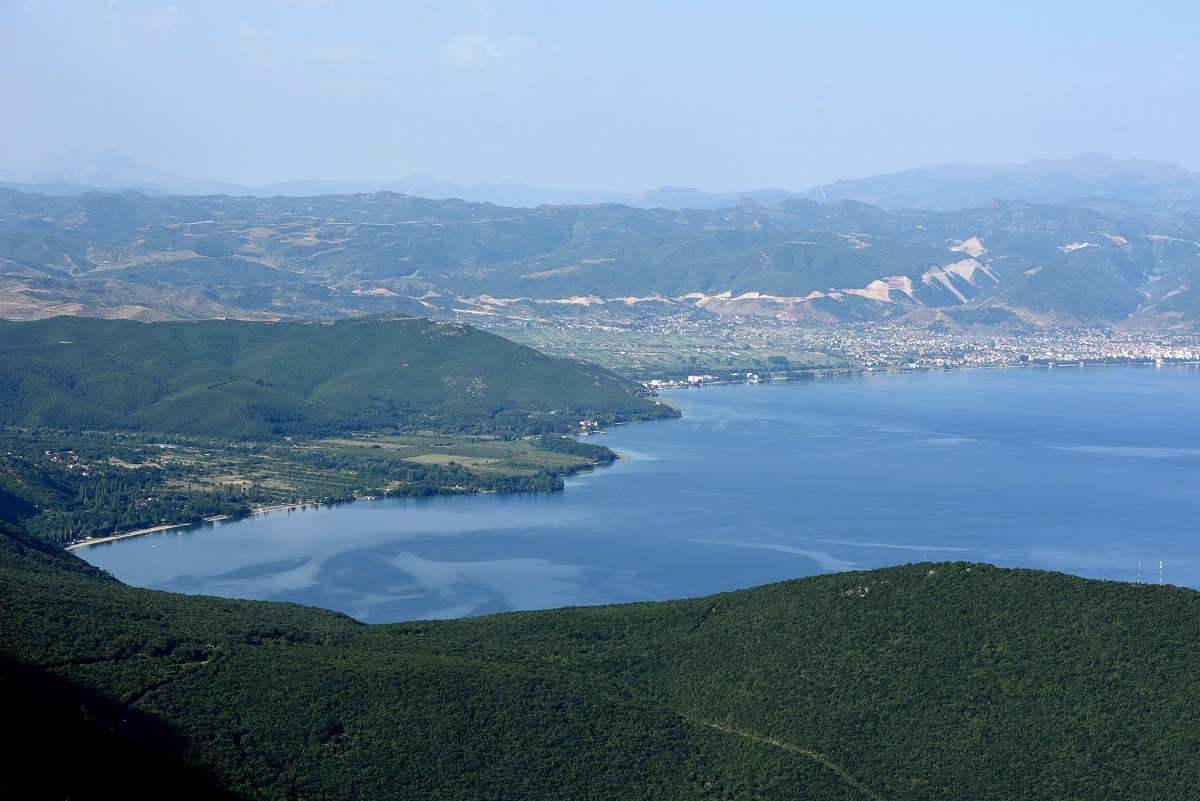On 14 and 15 July 2021, rivers and streams in the Eifel and Ardennes mountains of western Germany were swollen by extreme rainfall. The results were catastrophic. More than 200 people died in Germany and Belgium, making it the deadliest European flood in decades and 10th-deadliest in the past 100 years. Economic damage will be many billions of euros.
However, this flood is not an isolated event, it is part of a global increase of extreme weather events, the impact of which will become more frequent in the years to come due to altered landscapes.
The remarkable thing about the recent European flooding is the degree to which the worst devastation occurred in smaller river valleys in Germany, rather than further downstream in main river corridors such as the Rhine; which was hardly affected according to the International Commission for the Protection of the Rhine (ICPR).
Within the international Rhine river basin, the German Middle Mountains normally receive relatively large amounts of precipitation and have an important role in generating flood peaks in the middle and lower sections of the Rhine, particularly in Germany and the Netherlands. Historically, efforts to improve flood alleviation are common along major European rivers such as the Rhine. But upstream in the smaller branches? These areas have not received much attention – until now.
Flood alleviation needs to urgently bring in measures that slow river discharges and reduce flood peaks in the smaller tributaries of major European rivers.
This disaster suggests that the focus on flood alleviation needs to urgently extend to bring in measures that slow river discharges and reduce flood peaks in the smaller tributaries of major European rivers. One of our initiatives on “natural sponges”, which reverse the impacts of drainage, shows promise as an effective nature-based solution.
During the July rainfall event major flooding occurred on the upper tributaries of the Kyll River, that usually have gentle summer flows, resulting in peak discharges that no one thought possible. Hundreds of towns in Germany were hard hit as similar flooding occurred in smaller rivers over a wide area. Wetlands International is familiar with the upper Kyll River as it is the focus of ongoing research on flood management with WWF Netherlands and Bureau Stroming.









Add new comment